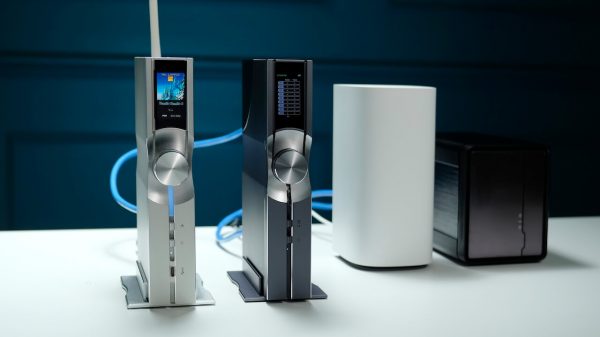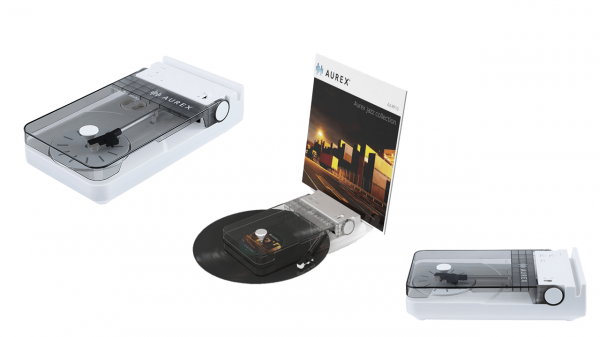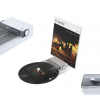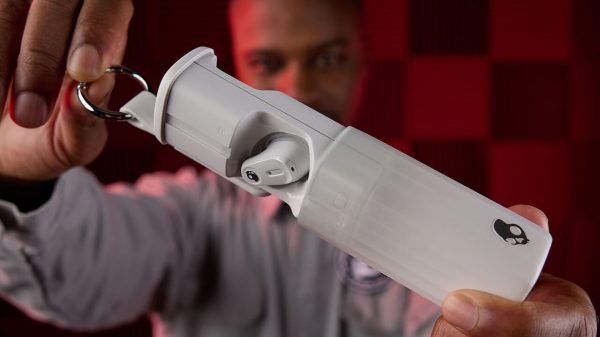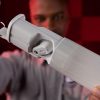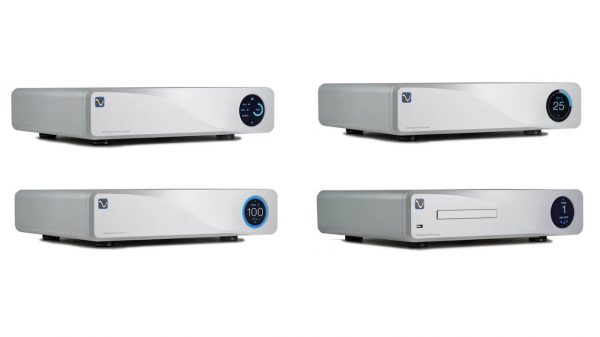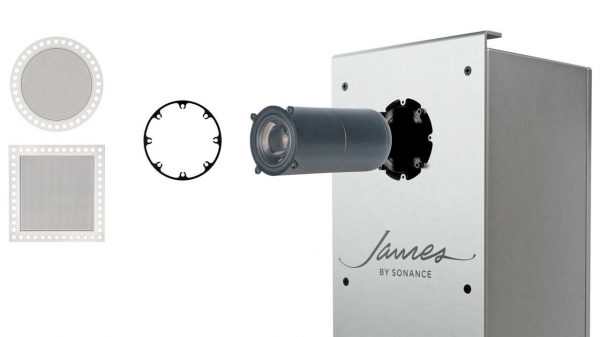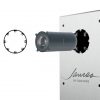SANYO Electric Co., Ltd. (SANYO) proudly announces the release of new, upgraded AA- and AAA-size “eneloop” rechargeable batteries five years from the initial product launch, with the concept of “eneloop” still based on promoting “a lifestyle that values reusing and recycling”. The new “eneloop” is able to be recharged approximately 1,500 times2, a new milestone for the rechargeable battery industry, making eneloop the industry No. 1 1.
Since the batteries were first announced on November 14, 2005, “eneloop” has become well-known around the world, as it has revolutionized the consumer-use rechargeable battery segment with its unique features: “Rechargeable approximately 1,000 times2“, “Coming pre-charged so it’s usable immediately after purchase”, and its unique design departing from the look of traditional batteries.
The latest breakthrough allowing “eneloop” to be recharged up to 1,500 times2 has been realized by applying newly-developed recharging technologies. In addition, to truly embody the concept of a “Clean Energy Loop”, the batteries are pre-charged at the factory using clean energy generated from renewable solar power as a part of the Green Power Certification System. As the new “eneloop” batteries hit the market, updated “eneloop” branded chargers and charger sets will also be entering the market.

SANYO will continue to expand the “eneloop” series throughout the world so that people can comfortably adopt a new “lifestyle that values reusing and recycling” contrary to the popular “use and throw away” lifestyle often associated with common products like batteries.
Main Features
Rechargeable battery, rechargeable “approximately 1,500 Times2“, realized by upgrades to “Material,” “Manufacturing Method,” and “Structure”
Incorporating new technologies for “material,” “manufacturing method,” and “structure” developed through the knowledge gained since the first release of “eneloop” in November 2005, the number of times a battery can be recharged has been increased by 1.5 times to “approximately 1,500 times2 compared to the conventional models6 , which makes the total number of times it is able to be recharged the industry No. 1. 1 With the ability to recharge the battery more times, the new “eneloop” is both more economically competitive, reducing the cost of usage per charge from the conventional model’s approximately 4 yen to 2.5 yen7 and enhanced in environmental awareness as it means the amount of overall battery waste will be reduced.
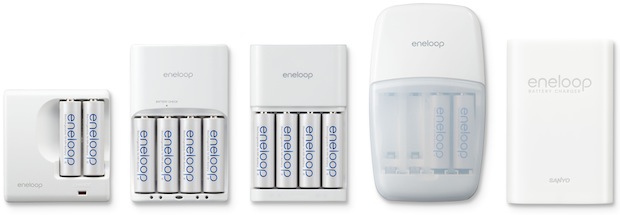
Introduction of new technologies
- Advanced materials: Development of a “highly-durable super-lattice alloy”
The durability of SANYO’s original “super-lattice alloy,” a negative-electrode material used in “eneloop”, has been enhanced by homogenizing the crystalline structure (a reduction of crystals with an irregular atomic order is irregular) as well as improving its composition (the ratio of constituent element) to reduce the deterioration of the super-lattice alloy by repeated charge and discharge. - Advanced manufacturing method: Developed technology to protect the surface of the super-lattice alloy
A new additive to the negative electrode material, “super-lattice alloy”, and a new additive coating technology was developed. By protecting the alloy surface, deterioration of the “super-lattice alloy” by repeated use can be reduced. - Advanced structure: Use of strong/thin outer case
The new “eneloop” adopts the same strong/thin outer case used for SANYO’s industry-leading level1 high-capacity AA-size rechargeable batteries, the “Ni-MH2700 Series.” This improves the internal cell space efficiency and optimizes the balance of battery components, leading to an increase in the number of times a battery can be recharged.
Charged “eneloop” will still be “ready to use even after 3 years8“, thanks to SANYO’s industry-leading self-discharge control technology
Rechargeable batteries typically have a “self-discharge” characteristic which gradually reduces charged energy over time. This is considered the downside of typical rechargeable batteries, as it renders them inconvenient since they are unusable immediately after purchase, requiring the batteries to be charged to start using them and recharged if they have been left on the shelf for a period of time. Since “eneloop” batteries have a low self-discharge rate, they can be pre-charged and usable immediately after purchase, like dry cell batteries. This new “eneloop” battery continues this tradition, and a fully-charged “eneloop” will be “ready for use off the shelf even after 3 years9” of storage. By using SANYO’s original “super-lattice alloy” for negative electrode material and improvement of materials and structure, a fully-charged “new eneloop” battery can maintain “approximately 75%9 of charged power even after 3 years”, ensuring that power is available when needed.
Solar energy used for factory pre-charging3, Realizing a “Clean Energy Loop”
In accordance with the Green Power Certification System, the new “eneloop” batteries will be charged by “green power” from photovoltaic generation. This means that a part of the electric power used for manufacturing (the amount equivalent used for factory pre-charging) is generated using clean, renewable solar energy, part of SANYO’s initiative to realize a “Clean Energy Loop”, where power is generated from renewable energy sources, stored for use when needed in batteries, and conserved or used efficiently for power-driven applications. Hence, the new “eneloop” truly embodies the concepts “energy” and “looping”, from production to performance.
Green Power corresponds to electric power generated by using natural, renewable energy sources, such as solar, wind and water power. This green power is evaluated, in terms of environmental added value, and made tradable by a third-party organization with issuance of a “Certificate of Green Power.” Companies and local governments that have obtained this certificate can use the natural energy equivalent to the amount of green power specified in the certificate.
Other Features
- Outer covering label used to prevent damage from repeated mounting/dismounting
- Antibacterial finishing10 ideal for business places, schools, and hospitals where one battery is handled by multiple people.
- Battery packages are made of recycled PET only and do not need to be separated when disposed. Instead of being recycled, they can be used as a battery storage case.
- Stable discharge voltage ensures longer lasting power than a dry cell battery even in low temperatures or when using it with a device that requires a large amount of electricity, such as a digital camera.
- Can be recharged without ever worrying about memory effect.
Outline and Background
“eneloop” originated from the concept of “looping energy.” Since the first release of “AA-size eneloop ” in November 2005 as a product embodying the brand vision “Think GAIA,” SANYO has been promoting a new “lifestyle that values reusing and recycling” contrary to the popular “use and throw away” lifestyle by launching a steady stream of reusable products in this series to the market.
The “eneloop” battery has received high market appraisal for its unique, user-friendly combination of the advantages of both dry cell and rechargeable batteries. The batteries come pre-charged like a dry cell, and are economical and environmental as they are able to be recharged for repeated use as well as fully recyclable at the end of its lifecycle. According to a company survey, the satisfaction level of “eneloop” users is over 90%11, and numerous companies now bundle “eneloop” batteries with their products. In total, over 90 million “eneloop” battery cells have been shipped to more than 60 countries worldwide (as of July 31, 2009).
To mark the 5th year since its launch, on November 14, 2009 in Japan5, SANYO will release the “new eneloop” in AA- and AAA-sizes with enhanced features, in terms of performance, concept, environmental friendliness, economic efficiency, and user-friendliness.



